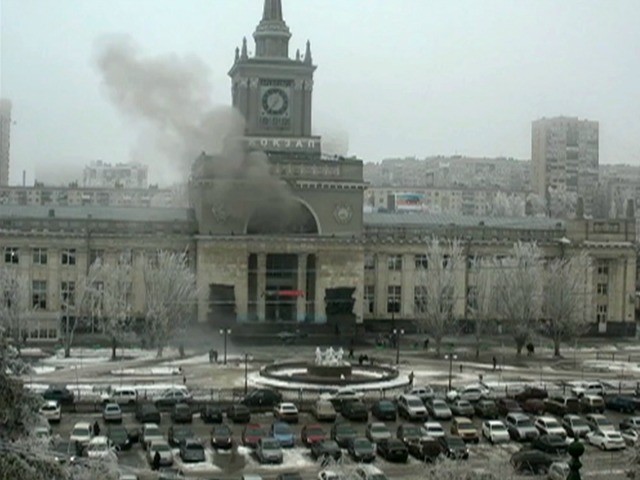
On Sunday, a terrorist detonated a bomb at a busy Russian train station in Volgograd, killing at least 16 people and injuring over 50 more. This is the second terrorist attack in the last two months in the city, raising more security questions around the 2014 Olympics in Sochi.
According to the Moscow Times, investigators are still gathering information concerning the attack:
The explosion rocked a crowded area between the train station’s front doors and the metal detectors leading into the main hall around 12:45 p.m. Sunday. The central station was filled with holiday passengers and especially crowded because several trains were running behind schedule.
The suicide bomber detonated a shrapnel-packed belt as a police officer approached a suspicious-looking woman nearby, officials said. Because the explosion occurred as the woman was approached, investigators initially thought that the woman was the bomber.
“Surviving police officers say they responded to a woman who looked suspicious,” a law enforcement official told Interfax. “After one of the officers tried to approach her, there was an explosion.”
But a review of camcorder footage from the attack showed a man at the epicenter of the explosion, the official said. A male finger holding a grenade pin was also found at the scene, he said.
Fourteen people died at the scene and two others died at the hospital. A young child and a security guard were among those who died at the station. Children between 9-14 years of age are in the hospital with wounds. Authorities did recover the body of the bomber.
Witnesses said taxi drivers who were waiting for customers were among the first to run in and aid the victims.
The bomb had the equivalent of 16 pounds of TNT. Metal detectors were in place, and an official told a local news agency that a person tried to gain access to the station, but was denied. After that the bomb exploded.
The Sunday Times reported on the moment of the blast:
Footage from a security camera opposite the station showed a bright orange flash at the moment of the explosion, which blew out dozens of windows and left piles of debris. State television showed ambulances lining up on the forecourt and motionless bodies on the ground.
“It was a very powerful blast,” a station shopkeeper, Valentina Petrichenko, told the Vesti-24 TV channel. “Some people started running and others were thrown back by the wave of the blast. It was very scary.”
At first, Russian media said a woman was the bomber, and Voice of Russia tweeted a picture of Oksana Aslanova. They claimed she was part of a group called the Black Widows. These women are widows of men who died fighting for an Islamic state in the North Caucasus and fight in their fallen husbands’ places. However, Aslanova spoke up on Russia’s Facebook and said it was not her, after which Voice of Russia removed the tweet. At the same time, Interfax news agency also quoted an official who said it was a male who detonated the bomb:
“It has been established that the suicide terrorist was a man who had brought explosives to the station in a rucksack. He has been identified,” the source said, but did not disclose the suspect’s name.
Volgograd, which used to be called Stalingrad, is an important city in Russia because of its role in World War II. It is also right on the edge of the Caucasus region, which is where many radical Islamist terrorist attacks have taken place after two separate wars in Chechnya. Chechen rebel leader Doku Umarov called for more attacks against civilians in Russia. In October, Naida Asiyalova bombed a bus in Volgograd, killing six people and injuring 36 others, including a 20-month old child. On Friday, a car blew up in the North Caucasus Mountains.
Authorities believe the death toll will rise. All New Years activities are canceled in Volgograd and January 1-3 have been designated as official days of mourning.

COMMENTS
Please let us know if you're having issues with commenting.